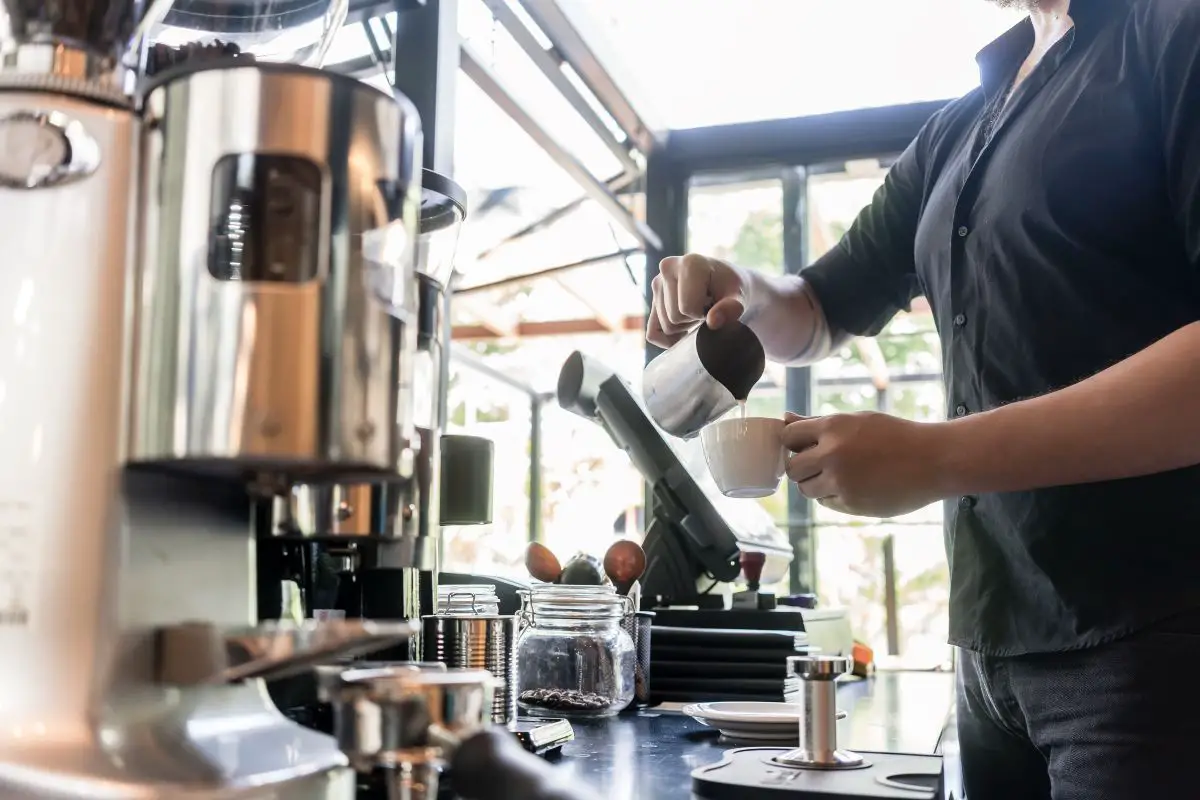If you enjoy drinking coffee, you know the coffee-making process can be a bit lengthy. This is especially so if you use freshly ground coffee beans to brew your coffee.

Preparing and adding milk to coffee to give it the consistency of beverages such as Cappuccino is also challenging.
However, some coffee makers have come to revolutionize the coffee-making process.
These are espresso coffee makers made to brew excellent coffee, steam milk, and froth it, enabling us to prepare creamy, velvety-textured coffee beverages at home.
However, coffee makers such as Keurigs are only made to brew black coffee using water. Since they have diverse functions, some coffee drinkers try to prepare coffee with milk in them.
Although this is not recommended by the manufacturers of most coffee makers, there is a way to make coffee with milk in them.
In this article, we will give you tips on how to do it and advice on how to preserve your coffee machine in the process.
What Happens When You Add Milk to a Coffee Maker
First, you should know that coffee makers are not made to brew coffee with milk.
Therefore, if you add milk to it and heat it, the proteins in it will loosen, creating a thick liquid that can coat the internal parts of the coffee maker and clog it.
If this coating remains in the coffee machine, it will eventually corrode, thereby damaging it.
Brewing coffee with milk in a bean-to-cup coffee maker will also result in a lukewarm beverage because the water doesn’t heat up properly.
This is because milk boils at a lower temperature than coffee, which prevents the water from heating up sufficiently to brew coffee.
The time it takes for the water to heat up causes the milk to burn, giving the brewed coffee a burnt taste.
Therefore, even if you get a milky coffee beverage after using milk in a coffee machine, it will not be flavorful, aromatic, or caffeinated enough.
And because it’s not easy to clean milk off a coffee maker, the milk residue left in it will encourage mold and bacterial growth, exposing you to food poisoning.
With these facts in mind, you can see that adding milk to a coffee maker during coffee brewing is not a good idea.
However, many coffee drinkers prefer to brew their milky coffee in a coffee maker to get a beverage with a creamy texture and consistency.
These are people who like to prepare their coffee with milk at one go to avoid heating milk on the side. Is there a way to do this?
Coffee Machines That Can Brew Coffee with Milk

Yes. Some coffee machines, such as automatic and semi-automatic espresso machines, can brew coffee with milk without getting spoiled. These coffee makers come with an inbuilt milk steam wand.
This enables coffee brewers to steam, froth the milk, and brew a strong cup of coffee in minutes. These machines are perfect for people who love to make espresso-based milk beverages such as cappuccinos and lattes.
Suppose you can’t afford these machines, and a regular coffee maker is all you have. Can you use milk in it despite the issues associated with this habit? In that case, you should learn a technique that will keep your machine from getting damaged.
The best option is to heat or steam your milk separately and add it to your coffee. Doing this in a microwave or saucepan on the stove only takes a few minutes. You may then froth the milk with a hand-held frother to make a velvety and creamy coffee beverage.
Factors to Consider When Using Milk in a Coffee Maker
However, some people choose to add milk to a coffee maker in spite of the challenges associated with it. If you are such a person, here are some tips to help you preserve your coffee machine from destruction.
- Whole milk is the best milk to use in coffee makers because it is least likely to clog the machine.
- Ensure you only add a small amount of milk to the coffee maker to avoid clogging the machine.
- You should only add milk to the water reservoir. This is the part of the coffee machine above the filter.
- Although you may be tempted to pour milk directly over the filter basket, it will only encourage mold to grow. This will make your coffee taste terrible and expose you to food poisoning.
- Avoid adding milk to a thermal coffee maker carafe to prevent bacteria from growing in it, which will contaminate your coffee.
- Once you use milk to brew coffee in your coffee maker, clean it with hot soapy water. Then put it through a few rinsing cycles to get rid of any milk in the brewing system. This will reduce the chances of milk residue building up in the machine.
Final Thoughts on How to Make Coffee with Milk in a Coffee Maker
Now you know a few things about making coffee with milk in a coffee maker. By looking at the information we’ve provided, you can see it will be hard to prepare a thick, milky, and flavorful cup of coffee by adding milk to a coffee maker.
Doing so will cut down your coffee machine’s lifespan, which would put a significant dent in your pocket.
Therefore, as coffee manufacturers recommend, it’s best to heat milk on the side and use the coffee machine to brew coffee only with water.
Then you can add hot milk to an already brewed, flavorful, and aromatic cup of coffee for the best-tasting milky coffee beverage.
Related Article:
How to Use Coffee Maker with Milk?